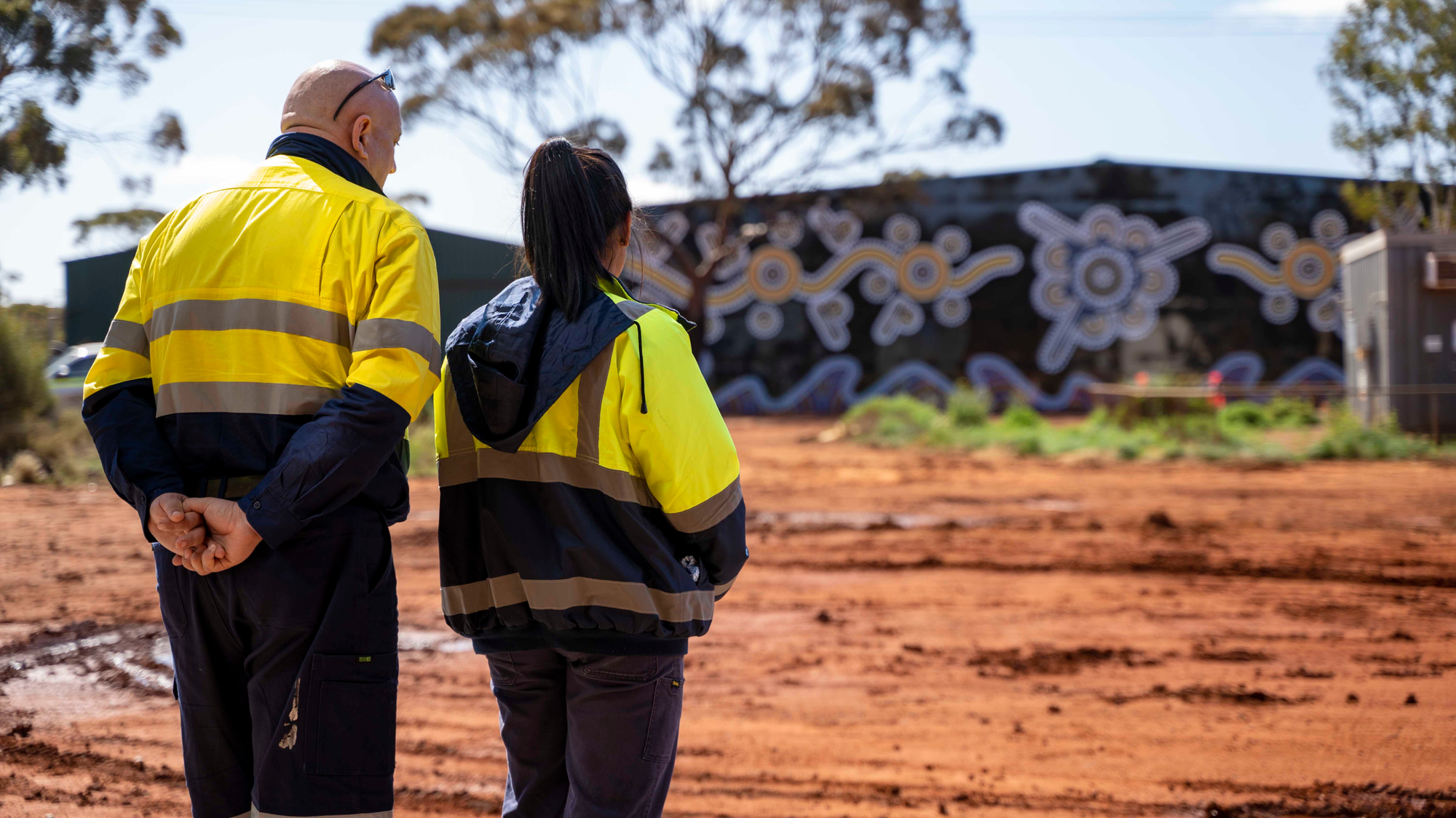Land access and cultural heritage
We are committed to ensuring our compliance with all relevant legislation and regulations concerning the preservation and protection of cultural heritage.

Our management approach
We recognise and respect the Traditional Owners of the land on which our operations are located and their connection to culture and heritage.
We recognise their connection to Country, prioritise mutually beneficial relationships and are committed to the management, protection and preservation of cultural heritage.
We have established a robust governance framework enabling us to build positive and sustainable relationships with our host communities, including Indigenous Australians, and supporting procedures and standards to provide further guidance.
Our Sustainability Committee receives regular reports on the implementation and status of our commitments to cultural heritage engagement and program implementation.
Our agreements
We are committed to ensuring agreements are in place with all Indigenous Australians on whose land we conduct business.
Our Native Title and Community Engagement teams are responsible for negotiating and implementing these agreements to secure our ongoing social licence to operate.
We respect and support the collective decision-making process of our Traditional Owners and ensure the groups we engage with are appropriately resourced to participate in negotiations.
We have both heritage-specific and Native Title agreements in place for the Indigenous Australians on whose land we conduct business.
The agreements we currently have in place provide a range of cultural heritage protections and benefits for Traditional Owners.
Protecting and managing cultural heritage
We acknowledge that our operations, both existing and planned, may intersect with areas of cultural heritage significance.
Cultural heritage refers to the dynamic tangible and intangible heritage assets of a group or society that are inherited from past generations. In the Australian context, this includes Indigenous and post-contact (European) heritage.
Managing cultural heritage
Our Heritage team engages with Traditional Owner representatives to carry out cultural heritage surveys prior to the commencement of any activities across our operations.
These surveys inform the location and design of our operations to avoid or minimise, to the greatest extent, the risk of disturbance to potential and known areas of cultural heritage.
We conduct two types of heritage surveys across our operational and exploration sites:
- Archaeological – identifying places where physical evidence of past activities of Indigenous Australians has been preserved in the landscape.
- Ethnographic – identifying places that are culturally significant to the Traditional Owners.
As part of the ethnographic survey and consultation process, we also ensure that Traditional Owner views regarding the importance and significance of archaeological sites and materials are documented.
We have made considerable progress in improving our approach to managing cultural heritage places, including:
- Implementation of a consolidated database of verified spatial information relating to Indigenous heritage places.
- Development of a heritage survey spatial data requirements to ensure new cultural heritage survey spatial data meets minimum accuracy and meta-data standards.
- Implementation of an Agreements and Obligations Register to consolidate the tracking of obligations and their delivery.
- Development of a Register of Ministerial Consents to track and manage any conditions attached to ministerial consents that have been obtained.
We collaborate with Traditional Owners to undertake routine monitoring of known Registered Indigenous heritage sites and other places of cultural heritage importance to ensure there is no unauthorised disturbance.
Any sites of significance to Indigenous Australians that are identified through an archaeological or ethnographic heritage survey are demarcated with industry-standard “heritage flagging”.
This process includes an appropriate buffer area and no works occur until approvals are in place and conditions are fulfilled.
Where heritage places are being permanently avoided, the demarcation ensures that no unauthorised activities occur on this land.